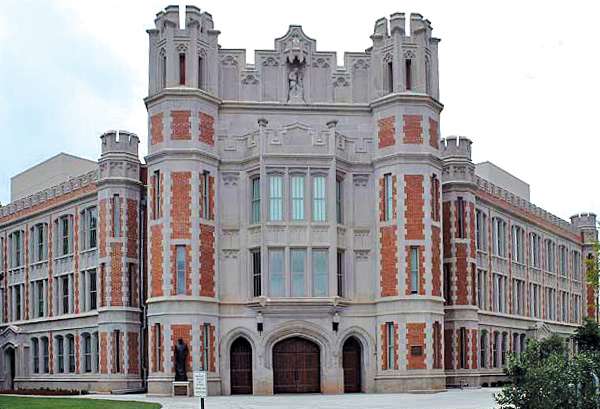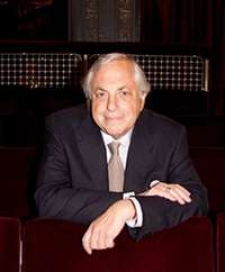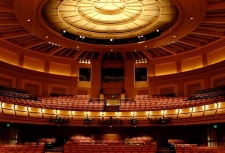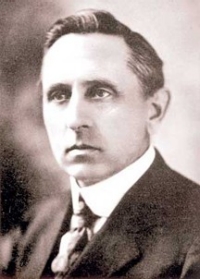The first courses in fine arts at the University of Oklahoma were given as early as 1893 in what was called the Musical Department, renamed the School of Music in 1899. The addition of courses in painting, drawing, oratory, and dramatic work dictated a change of name to the School of Fine Arts in 1903. Established as the College of Fine Arts in 1924, the fourth college founded at the university, the college was renamed the Weitzenhoffer Family College of Fine Arts in 2004 in honor of the Weitzenhoffer family, which has given extraordinary support to the college as well as to many areas of the university.
Today, the college offers the largest and most comprehensive fine arts program in the state and the region. The college faculty, with 104 members, is the second largest faculty at the University of Oklahoma. They are artists and scholars who are outstanding in their fields and committed to the education of young artists. The college is proud of its students, of whom 4 percent are National Merit Scholars and are recruited nationwide.
The college is composed of the OU School of Visual Arts, School of Dance, Peggy V. Dow Helmerich School of Drama, School of Music, and the A. Max Weitzenhoffer School of Musical Theatre. Because the college is part of a major research university, students profit from many opportunities to study in areas outside the arts.
The OU School of Visual Arts, which from 1924 to 1928 was known as the School of Painting and Design, was named the School of Art in 1929. The school offers comprehensive professional programs in film and video, photography, visual communications, studio arts and art history. The faculty is composed of teaching artists and art historians whose knowledge, leadership and skills create a classroom and studio environment that is creative and challenging. In fall 1999, the then School of Art opened the Charles M. Russell Center for the Study of Art of the American West. The center offers the nation’s first university-based program dedicated to the field of American art history as it relates to the Western United States. The OU School of Visual Arts hosts an impressive array of outstanding visiting artists through the Jerome and Wanda Otey Westheimer Chair for Distinguished Visiting Artists, established in 2004. In the fall of 2007, the school was renamed the School of Art and Art History, and the OU School of Visual Arts, in 2016.
The Department of Dance, which became the School of Dance in 1998, was established in 1961, when Miguel Terekhov and Yvonne Chouteau, principal dancers with the Ballet Russe de Monte Carlo, were invited to teach a few classes. Response to these classes was so positive that Terekhov was invited to develop the present program. With a reputation for strong performance capabilities and the high quality and professionalism of its graduates, the program quickly rose to national prominence. The faculty blends academic skill and professional dance experience in ballet and modern dance. Former students have established professional careers in major ballet companies, as well as in Broadway musicals, national touring companies and modern dance companies. In spring 2000, Professor Mary Margaret Holt was appointed first holder of the John and Mary Nichols Endowed Chair in Dance, the first such chair in the school. In 2002 construction began on the Donald W. Reynolds Performing Arts Center, which includes renovation of Holmberg Hall and a new 18,000–square-foot facility for the School of Dance. The new facility opened in 2005.
The Peggy V. Dow Helmerich School of Drama is the second oldest university dramatic training institution in the nation. The school traces its roots to 1903 and the “Program of Elocution and Expression.” In 1924, the same year the College of Fine Arts was established, the program became known as the School of Dramatic Art, officially changing its name to the School of Drama in 1937.
A distinguished lineage of alumni has helped established a nationally recognized reputation for excellence. The school boasts Academy Award, Tony Award and Emmy Award-winning graduates among its alumni body, including Van Heflin, Alice Ghostly, A. Max Weitzenhoffer, Dennis Weaver, Rance Howard, Lou Antonio, Ronnie Clare Edwards, Larry Drake and James Garner.
In spring 2003, the school was honored by the native Oklahoman and distinguished actor James Garner with the establishment of the James Garner Professor of Drama.
In 2011, the School of Drama was named in honor of Peggy Dow Helmerich to recognize her outstanding career as an actress and the generous support provided by Mrs. Helmerich and her husband, OU alumnus Walter H. Helmerich III. Their numerous gifts have established endowments for student scholarships, special programs and a visiting guest artist professorship.
The School of Music presents over 200 recitals and concerts each year. A full complement of faculty artists and scholars offers instruction in all traditional instruments and voice, music education, music history, music composition and music theory. The school is housed in the magnificent Stanley B. Catlett Music Center, which was dedicated in fall 1998 with special guest performances by Marilyn Horne and Van Cliburn. In the fall of 1999, a series of recitals by distinguished concert organists, including Dame Gillian Weir, inaugurated the Mildred Andrews Boggess Memorial Organ. Students and faculty are frequent recipients of state, regional, national, and international awards.
The A. Max Weitzenhoffer School of Musical Theatre began as the Musical Theatre Program within the School of Drama in 1991, became an independent department in Fall 2001, and in 2009 became the fifth school within the College of Fine Arts. Alumnus and two-time Tony Award winner A. Max Weitzenhoffer endowed several professorships in musical theatre, and in honor of his gift, the department was renamed the A. Max Weitzenhoffer Department of Musical Theatre. In 2009, the program was named the Weitzenhoffer School of Musical Theatre. The school offers one of the strongest musical theatre programs within an American public university. While relatively new as an independent school, musical theatre has a long history within the college. Working closely with colleagues in dance, drama and music, the department offers the Bachelor of Fine Arts degree in musical theatre performance.





